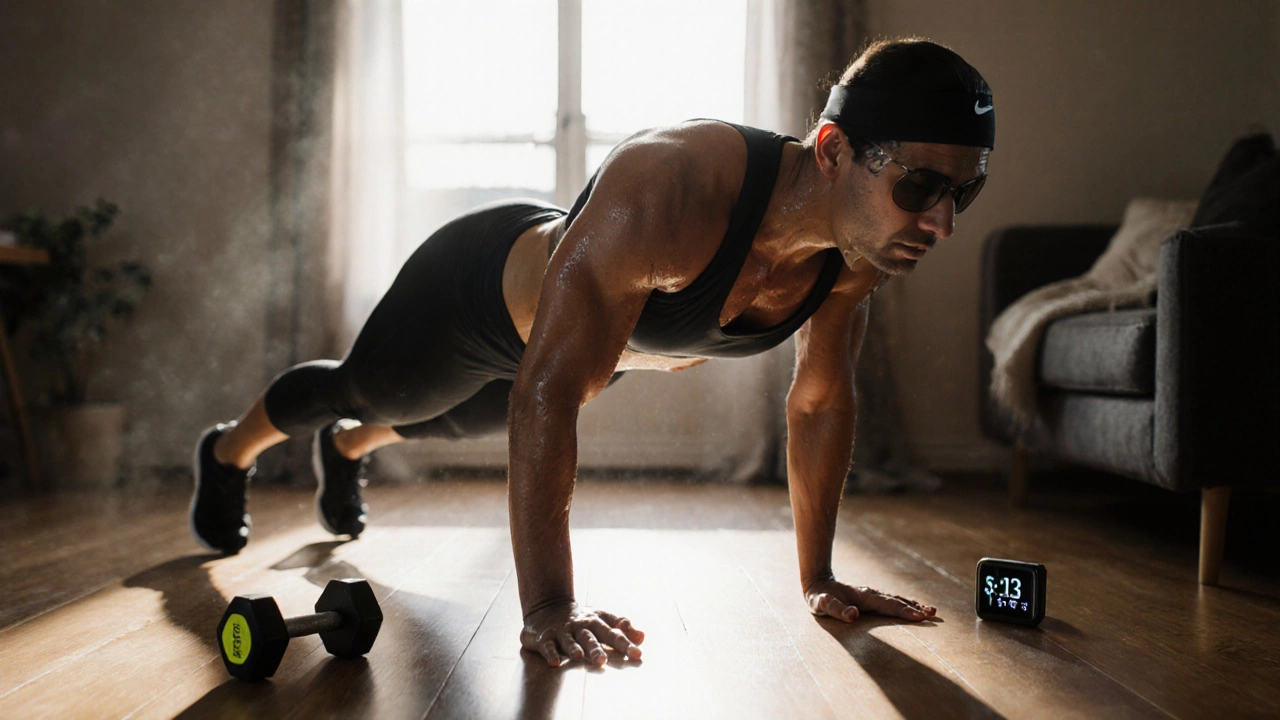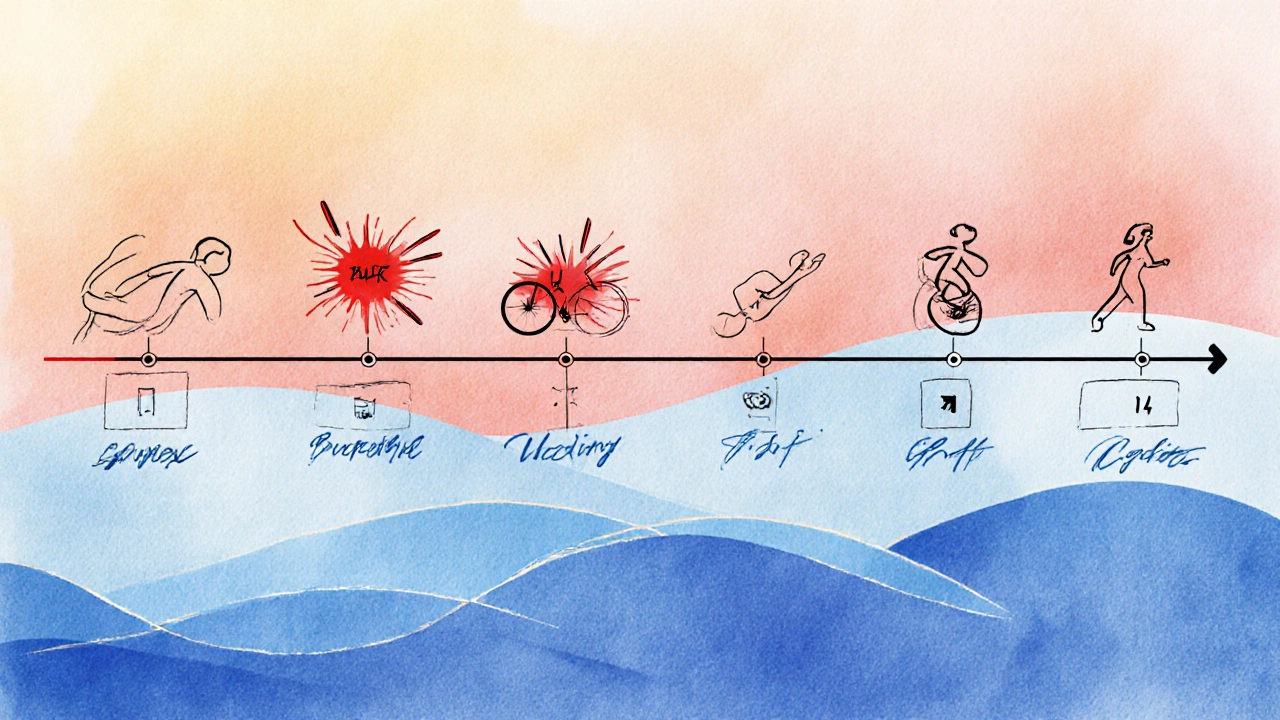
Based on the article's 2-week cardio plan with HIIT and nutrition guidance
0.0 lbs
Expected range based on article's guidelines
Note: Results vary based on individual metabolism, starting weight, and activity level. This calculator uses conservative estimates based on the article's recommendations.
Want to lose weight fast in two weeks? It’s possible-but not because of magic pills or extreme diets. It’s because your body burns fat most efficiently when you move it hard and often. And nothing moves the needle faster than the right kind of cardio. If you’re serious about shedding pounds in just 14 days, you need to understand how cardio works, how to do it right, and what to avoid. This isn’t about running for hours. It’s about strategy, intensity, and consistency.
Most people think cardio means walking on a treadmill or riding a stationary bike for 30 minutes. That’s fine for maintenance, but if you’re trying to lose weight fast, you need to crank up the intensity. Low-intensity steady state (LISS) cardio burns calories, yes-but it doesn’t spike your metabolism the way high-intensity cardio does. Your body adapts quickly to slow, easy efforts. After a few days, it stops burning extra fat just because you’re moving.
What works better? HIIT-High-Intensity Interval Training. This isn’t fancy. It’s simple: 30 seconds of all-out effort, followed by 60 seconds of rest or slow movement. Repeat that 8-10 times. Done right, a 20-minute HIIT session burns more fat than an hour of jogging. Studies show HIIT can increase your post-workout calorie burn for up to 24 hours. That’s called EPOC-Excess Post-exercise Oxygen Consumption. In plain terms: your body keeps burning calories even after you’re done.
You don’t need a gym. You don’t need equipment. Just your body and a timer. Here’s the plan:
Repeat this for 14 days. The key is not the length of the workout-it’s the intensity. On HIIT days, you should feel like you’re giving 90% of your max effort. If you’re not gasping for air by the end, you’re not pushing hard enough.
Cardio alone won’t get you there. You can’t out-exercise a bad diet. In two weeks, your food choices matter more than ever. Here’s what works:
Forget counting calories. Focus on whole foods. Eat until you’re satisfied, not stuffed. Your body will start burning fat when you stop flooding it with sugar and refined carbs.

You might be doing everything right-working out hard, eating clean-and still not losing weight. Why? Because cortisol, the stress hormone, is sabotaging you. When you’re stressed or sleep-deprived, your body holds onto fat, especially around the belly. It thinks you’re under threat and needs to store energy.
Get 7-8 hours of sleep every night. No exceptions. If you’re tossing and turning, turn off screens an hour before bed. Try a 10-minute breathing exercise: inhale for 4 seconds, hold for 4, exhale for 6. Repeat five times.
Stress isn’t just emotional. Overtraining is stress too. If you’re doing HIIT every day without rest, your body will shut down fat loss. That’s why Sunday is a full rest day. Recovery isn’t lazy-it’s part of the plan.
Realistic results? Most people lose 4-8 pounds in two weeks with this plan. That’s mostly fat, not water. You’ll notice your clothes fit looser, your energy goes up, and your waistline shrinks. Some people lose more-up to 10 pounds-if they’re heavier to start with and stick strictly to the plan.
But don’t get obsessed with the scale. Take measurements. Measure your waist, hips, and thighs before you start. Then measure again on day 14. Often, the number on the scale doesn’t change much, but your body shape does. That’s the real win.
Here’s what most people do wrong-and how to fix it:

Two weeks is a jumpstart-not a finish line. If you stop now, you’ll likely regain the weight. Use this time to build habits, not just lose pounds.
After day 14, keep doing 3-4 HIIT sessions a week. Add strength training twice a week-bodyweight squats, push-ups, planks. Muscle burns more calories at rest than fat. Keep eating whole foods. Keep sleeping well.
This isn’t a diet. It’s a lifestyle shift. The goal isn’t to lose weight fast. It’s to learn how to keep it off.
In Perth, I’ve seen this work for a teacher who lost 6 pounds in 14 days by swapping her afternoon cookies for almonds and doing 20-minute HIIT videos after work. A construction worker lost 9 pounds by walking fast during lunch and cutting out soda. One mum lost 7 pounds and dropped two dress sizes-not because she starved herself, but because she moved more and ate real food.
It’s not about being perfect. It’s about being consistent. You don’t need to run a marathon. You just need to move hard, eat clean, sleep well, and keep going.
It’s possible, but only if you combine cardio with a clean diet. Cardio burns calories, but if you’re eating sugar, processed foods, or large portions, your body won’t tap into fat stores. To lose 10 pounds in two weeks, you need a daily calorie deficit of about 1,750 calories. That’s hard to achieve with exercise alone-you’d need to run over 10 miles a day. The real key is cutting calories through food, not just burning them with movement.
No. Doing HIIT every day increases your risk of injury and raises cortisol levels, which can block fat loss. Your muscles and nervous system need rest to recover. That’s why the plan includes only three HIIT sessions per week, with active recovery and full rest days. Pushing too hard backfires. Recovery is when your body burns fat and builds resilience.
You don’t need long sessions. A 20-minute HIIT workout is more effective than a 60-minute slow jog. If you’re short on time, skip the steady-state cardio days and do two 20-minute HIIT sessions instead. Even 10 minutes of intense movement-like jumping jacks, burpees, and high knees-can spark fat loss if done with effort. Consistency beats duration every time.
Only if you’re not eating enough protein or you’re in a massive calorie deficit. This plan includes protein-rich meals and moderate calorie reduction-not starvation. Your body will burn fat first, not muscle, as long as you’re getting enough protein and not overtraining. Adding bodyweight exercises like push-ups and squats helps protect muscle too.
No. All the workouts in this plan use your body weight. You can do burpees, mountain climbers, jump squats, and high knees in your living room. A timer on your phone is all you need. If you want to add resistance later, a pair of dumbbells or resistance bands help-but they’re not required for results in two weeks.
Two weeks isn’t enough to transform your body permanently. But it’s enough to show you what you’re capable of. You can move harder than you thought. You can eat cleaner than you believed. You can feel stronger, sharper, and more in control.
That’s the real win. Not the pounds lost. The confidence gained.